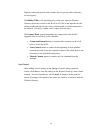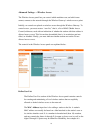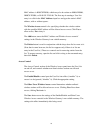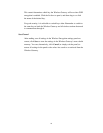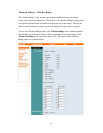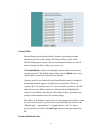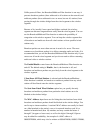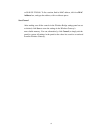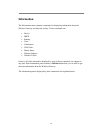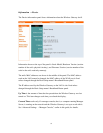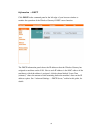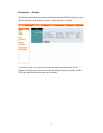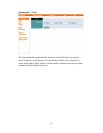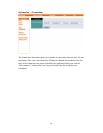52
Unlike protocol filters, the Broadcast/Multicast Filter function is one-way: it
prevents broadcast packets (those addressed to all stations on the network) and
multicast packets (those addressed to two or more, but not all, stations) from
passing through the wireless bridge from the wired segment to the wireless
segment.
Because of its (usually) lower speed and higher overhead, the wireless
segment can become congested more easily than the wired segment. You can
use the Broadcast/Multicast Filter function to reduce the possibility of
congestion on the wireless segment. You can keep the wireless segment free
of broadcasts and multicasts from all wired stations or from specified wired
stations only.
Broadcast packets are most often sent out in search of a server. The most
common use of multicast packets is to deliver streaming audio and video. It is
recommended that you use the Broadcast/Multicast Filter function only if your
servers are all on the wired segment and you do not need to deliver streaming
audio and video to wireless stations.
The Enable/Disable control turns the Broadcast/Multicast Filter function on
and off. The default setting is Disable , that is, the function is off, and
broadcast and multicast packets can pass freely from the wired segment to the
wireless segment.
If Sent from All Wired Stations is selected and the Broadcast/Multicast
Filter function is enabled, no broadcast or multicast packets from any wired
station will be allowed onto the wireless segment.
The Sent from Listed Wired Stations option lets you specify that only
broadcast and multicast packets from particular wired stations are to be
blocked at the wireless bridge.
The MAC Address input boxes are for listing the wired stations from which
broadcast and multicast packets should be blocked at the wireless bridge. You
can list up to sixteen machines. A station's MAC address can usually be found
on a label attached to the station's case or its network interface card. It is a
number in hexadecimal (base 16) notation, and may contain the letters A
through F (in upper or lower case) as well as the digits 0 through 9. Spaces
may be added for readability. An example of a MAC address is
0080C82F8086, which may also be written as 0080c82f8086, 0080C8 2F8086,



